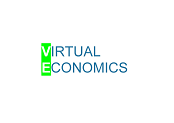Risk Optimization of Industrial Enterprise
DOI:
https://doi.org/10.34021/ve.2019.02.03(5)Keywords:
industrial enterprise, risk management, development, model, optimization, operation conditionsAbstract
Industrial enterprise risk management must take into account the conditions of the activities that are carried out and the goals that are set out under these conditions. To solve this problem, a scientific and methodological approach to targeted risk optimization of an industrial enterprise was developed based on a set of models of comparing the goals of the enterprise under operation conditions, matching the available resources with the needs and choosing the methods of risk management according to the limitations by goals and resources. The use of the developed scientific and methodological approach enables the enterprise to choose the most effective methods of risk management.
Downloads
References
Bajgoric, N. (2011). Server operating environment for business continuance: framework for selection. International Journal of Business Continuity and Risk Management, 1(4), 317-338. https://doi.org/10.1504/IJBCRM.2010.038622
Better, M., Glover, F., Kochenberger, G., & Wang, H. (2008). Simulation optimization: application in risk management. International Journal of Information Technology & Decision Making, 7(4), 571–587. https://doi.org/10.1142/S0219622008003137
Bonaccolto, G., & Caporin, M. (2016). The Determinants of Equity Risk and Their Forecasting Implications: A Quantile Regression Perspective. Journal of Risk and Financial Management, 9(3), 8: 1-25. https://doi.org/10.3390/jrfm9030008
Carr, M., Konda, S., Monarch, I., Walker, C., & Ulrich, F. (1993). Taxonomy-Based Risk Identification (CMU/SEI-93-TR-006). Pittsburgh, Pennsylvania: Software Engineering Institute, Carnegie Mellon University. Retrieved from https://resources.sei.cmu.edu/library/asset-view.cfm?assetid=11847
Chernenko, Y. O. (2014). Vybir metodiv upravlinnia ryzykamy na promyslovych pidpryyemstvach [Selection of risk management methods on industrial enterprise]. Visnyk Odeskoho natsionalnoho universytetu. Ekonomika – Bulletin of the Odessa National University. Economics, 19(1/2), 36-39. Retrieved from http://www.visnyk-onu.od.ua/journal/2014_19_1_2/10.pdf [in Ukrainian].
Crockford, N. (1986). An Introduction to Risk Management (2nd ed.). Cambridge, UK: Woodhead-Faulkner.
Dorfman, M. S., & Cather, D. A. (2012). Introduction to Risk Management and Insurance. Cambridge: Pearson.
Dźwigoł, H. (2018). Współczesne procesy badawcze w naukach o zarządzaniu. Uwarunkowania metodyczne i metodologiczne. Warszawa: PWN [in Polish].
Dźwigoł, H., & Dźwigoł-Barosz, M. (2018). Scientific research methodology in management sciences. Financial and Credit Activity: Problems of Theory and Practice, 2(25), 424-437. https://doi.org/10.18371/fcaptp.v2i25.136508
Dźwigoł, H.; & Wolniak, R. (2018). Controlling w procesie zarządzania chemicznym przedsiębiorstwem produkcyjnym [Controlling in the management process of a chemical industry production company]. Przemysl Chemiczny, 97(7), 1114—1116. https://doi.org/10.15199/62.2018.7.15 [in Polish].
Dzwigoł, H., Dzwigoł–Barosz, M., Zhyvko, Z., Miskiewicz, R., & Pushak, H. (2019). Evaluation of the energy security as a component of national security of the country. Journal of Security and Sustainability Issues, 8(3), 307-317. http://doi.org/10.9770/jssi.2019.8.3(2)
Eskandari, H. & Rabelo, L. (2007). Handling uncertainty in the analytic hierarchy process: A stochastic approach. International Journal of Information Technology & Decision Making, 6(1), 177–189. https://doi.org/10.1142/S0219622007002356
Fukushima, M. (2006). How to deal with uncertainty in optimization — some recent attempts. International Journal of Information Technology & Decision Making, 5(4), 623–637. https://doi.org/10.1142/S0219622006002192
Fuschi, D. L., & Tvaronavičienė, M. (2016). A network based business partnership model for SMEs management. Entrepreneurship and Sustainability Issues, 3(3), 282-289. https://doi.org/10.9770/jesi.2016.3.3(5)
Hroznyi, I., Kuzmak, O., Kuzmak, O., & Rusinova, O. (2018). Modeling management of diversification of foreign economic interactions. Problems and Perspectives in Management, 16(1), 155-165. http://dx.doi.org/10.21511/ppm.16(1).2018.15
Hubbard, D. W. (2009). The Failure of Risk Management: Why It's Broken and How to Fix It. Hoboken, New Jersey: John Wiley & Sons, Inc.
ISO. (2009). ISO 31000:2009. Risk management — Principles and guidelines on implementation. International Organization for Standardization. Retrived from https://www.iso.org/standard/43170.html
Kamińska, B. (2018). Iterative signal processing in anticipatory management of industrial enterprise development. Virtual Economics, 1(1), 53-65. https://doi.org/10.34021/ve.2018.01.01(4)
Karpenko, L., Serbov, M., Kwilinski, A., Makedon, V., & Drobyazko, S. (2018). Methodological platform of the control mechanism with the energy saving technologies. Academy of Strategic Management Journal, 17(5), 1939-6104-17-5-271: 1-7. Retrieved from https://www.abacademies.org/articles/Methodological-platform-of-the-control-mechanism-1939-6104-17-5-271.pdf
Kelly, J.P. (2002). Simulation optimization is evolving. INFORMS Journal of Computing, 14(3), 223–225. https://doi.org/10.1287/ijoc.14.3.223.108
Kouvelis, P., & Yu, G. (1997). Robust Discrete Optimization and Its Applications. New York: Springer US. https://doi.org/10.1007/978-1-4757-2620-6
Klimenko, S. M. (2013). Formuvannia stratehii rozvytku pidpryiemstva z urakhuvanniam ryzykiv [Formation of the Strategy of Enterprise Development with Consideration of Risks]. Business Inform, 8, 343-347. Retrieved from https://www.business-inform.net/export_pdf/business-inform-2013-8_0-pages-343_347.pdf [in Ukrainian].
Kuzmak, O., Kuzmak, O., Tarasova H., & Buchkovska, Y. (2018). Modern realities of risk management in the activities of Ukrainian banks. Banks and Bank System, 13(1), 150-161. http://dx.doi.org/10.21511/bbs.13(1).2018.14
Kvilinskyi, O., & Kravchenko, S. (2016). Optimization of innovative project realization conditions. Zeszyty Naukowe Politechniki Poznańskiej. Organizacja i Zarządzanie, 70, 101-111. https://doi.org/10.21008/j.0239-9415.2016.070.07
Kwilinski, A. (2017). Development of industrial enterprise in the conditions of formation of information economics. Thai Science Review, Autumn 2017, 85 – 90. https://doi.org/10.5281/zenodo.1414236
Кwilinski, A. (2018a). Mechanism of modernization of industrial sphere of industrial enterprise in accordance with requirements of the information economy. Marketing and Management of Innovations, 4, 116-128. http://doi.org/10.21272/mmi.2018.4-11
Kwilinski, A. (2018b). Mechanism for assessing the competitiveness of an industrial enterprise in the information economy. Research Papers in Economics and Finance, 3(1), 7-16. https://doi.org/10.18559/ref.2018.1.1
Kwilinski, A. (2018c). Trends of development of the information economy of Ukraine in the context of ensuring the communicative component of industrial enterprises. Economics and Management, 1(77), 64-70.
Кwilinski, A. (2019). Implementation of Blockchain Technology in Accounting Sphere. Academy of Accounting and Financial Studies Journal, 23(SI2), 1528-2635-23-SI-2-412: 1-6. Retrieved from https://www.abacademies.org/articles/Implementation-of-Blockchain-Technology-in-Accounting-Sphere-1528-2635-23-SI-2-412.pdf
Kwilinski, A., Dalevska, N., Kravchenko, S., Hroznyi, I., Kovalenko, I. (2019a). Formation of the entrepreneurship model of e-business in the context of the introduction of information and communication technologies. Journal of Entrepreneurship Education, 22(SI1), 1528-2651-22-S1-337: 1-7. Retrieved from https://www.abacademies.org/articles/Formation-of-the-entrepreneurship-model-of-e-business-1528-2651-22-S1-337.pdf
Kwilinski, A., Volynets, R., Berdnik, I., Holovko, M., & Berzin, P. (2019b). E-Commerce: Concept and Legal Regulation in Modern Economic Conditions. Journal of Legal, Ethical and Regulatory Issues, 22(SI2), 1544-0044-22-SI-2-357: 1-6. Retrieved from https://www.abacademies.org/articles/E-Commerce-concept-and-legal-regulation-in-modern-economic-conditions-1544-0044-22-SI-2-357.pdf
Mackevičius, J., Šneidere, R., & Tamulevičienė, D. (2018). The waves of enterprises bankruptcy and the factors that determine them: the case of Latvia and Lithuania. Entrepreneurship and Sustainability Issues, 6(1), 100-114. https://doi.org/10.9770/jesi.2018.6.1(8)
Okoli, J., Watt, J., Weller, G., & Wong, W. B. L. (2016). The role of expertise in dynamic risk assessment: A reflection of the problem-solving strategies used by experienced fireground commanders. Risk Management, 18(1), 4–25. https://doi.org/10.1057/rm.2015.20
Opalenko, A. M. (2015). Modeli optymizatsii ryzykiv v diialnosti vyrobnychoho pidpryiemstva [The Models of Risk Optimization in Manufacturing Enterprise Business]. Efektyvna ekonomika - Effective Economy, 1. Retrived from http://www.economy.nayka.com.ua/?op=1&z=3744 [in Ukrainian].
Paulusch, J. (2017). The Solvency II Standard Formula, Linear Geometry, and Diversification. Journal of Risk and Financial Management, 10(2), 11: 1-12. https://doi.org/10.3390/jrfm10020011
Ramalingama, D., Arunb, S., & Anbazhaganc, N. (2018). A Novel Approach for Optimizing Governance, Risk management and Compliance for Enterprise Information security using DEMATEL and FoM Procedia Computer Science, 134, 365-370. https://doi.org/10.1016/j.procs.2018.07.197
Savchenko, T., Basiurkina, N., Rodina, O., & Kwilinski, A. (2019). Improvement of the assessment methods of product competitiveness of the specialized poultry enterprises. Management Theory and Studies for Rural Business and Infrastructure Development, 41(1), 43-61. https://doi.org/10.15544/mts.2019.05
Sifumba, C. M., Mothibi, K. B., Ezeonwuka, A., Qeke, S., & Matsoso, M. L. (2017). The risk management practices in the manufacturing SMEs in Cape Town. Problems and Perspectives in Management, 15(2(cont. 2)), 386-403. http://dx.doi.org/10.21511/ppm.15(2-2).2017.08
Simon, P. & Hillson, D. (2012). Practical Risk Management: The ATOM Methodology. Vienna, VA: Management Concepts.
Stepanova, E.M., & Volkov, A.A. (2017). Otsinka informatsiinykh ryzykiv v umovakh rozvytku informatsiinoi systemy pidpryiemstva [Assessment of the information risks in the conditions of the enterprise information system development]. Visnik of the Volodymyr Dahl East Ukrainian National University, 10(240), 106-110. Retrieved from http://dspace.snu.edu.ua:8080/jspui/handle/123456789/1832 [in Ukrainian].
Tarasova, H. (2018). Scientific and methodical approach to adaptive diversification of industrial enterprise development under crisis conditions. Virtual Economics, 1(1), 42-52. https://doi.org/10.34021/ve.2018.01.01(3)
Tkachenko, V., Kwilinski, A., Tkachenko, I., & Puzyrova, P. (2019). Theoretical and Methodical Approaches to the Definition of Marketing Risks Management Concept at Industrial Enterprises. Marketing and Management of Innovations, 2, 228-238. http://doi.org/10.21272/mmi.2019.2-20
Virine, L., & Trumper, M. (2007). Project Decisions: The Art and Science. Vienna. VA: Management Concepts.
Zeng, Y. & Skibniewski, M. J. (2013). Risk assessment for enterprise resource planning (ERP) system implementations: a fault tree analysis approach. Enterprise Information Systems, 7(3), 332-353. https://doi.org/10.1080/17517575.2012.690049
Zhou, Q., Fang, G., Wang, D.P., & Yang, W. (2016). Research on the robust optimization of the enterprise's decision on the investment to the collaborative innovation: Under the risk constraints. Chaos, Solitons & Fractals, 89, 284-289. https://doi.org/10.1016/j.chaos.2015.11.021





